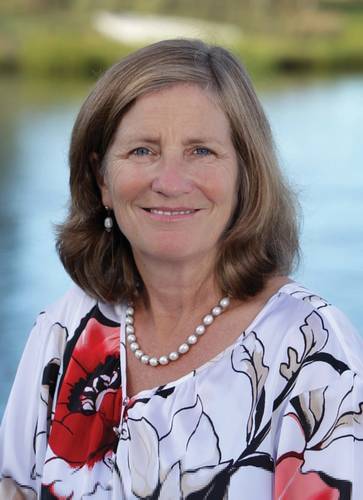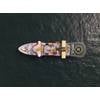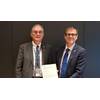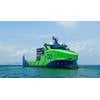New England
Gloucester sets its sights on subsea tech
Nestled on the North Shore of Massachusetts is the town of Gloucester. The town sits on Cape Ann and this popular summer destination is quintessential New England. It was originally founded in 1623 and is one of the earliest English settlements. In its earlier days it was an important shipbuilding center, and to this day due to its proximity to Georges Bank, it remains one of the most important fishing ports in the country. As you stroll along the waters edge you will find the iconic statue of Gorton’s Fisherman leaning into the helm of his ship. The statue looks out to sea standing as a reminder of the over 10,000 men of Gloucester who gave their live to the Atlantic Ocean. Several of those men were depicted in the novel by Sebastian Junger, the Perfect Storm. Today as with many commercial fishing ports who’s industry faces an unknown future, there is a movement to position the area for an influx of marine technology clusters. Marine Technology Reporter sat down with Carolyn Kirk the Mayor of Gloucester and the towns Director of Harbor Planning Sarah Garcia to see what is happening in the historical port.
Can you tell us a little bit about your focus in northern New England with regard to increasing the viability and accessibility for marine technology companies?
Ms. Kirk: I took office January 1, 2008. Gloucester has 62 miles of coastline and one mile of the designated port area, which is what we consider to be our working harbor. That is the area of concentration that we have focused on. We had a series of what I call listening posts throughout the city.
Was this an effort to take the pulse of the area regarding a focus for the working harbor?
Ms. Kirk: Yes. We asked people what their vision was for the working port of the city of Gloucester. We had over 600 people attend these meetings, and the format was very simple. They got to go to a microphone and speak for up to three minutes. We had a panel of nine people that were regular citizens and that also represented a cross section of the community. With our Director of Harbor Planning, Sarah Garcia’s help and support we took all the feedback and digested it and came up with a plan for the harbor area. Basically that drove everything we have done since that time. Several things came out of that including the municipal harbor plan, which captured that vision and articulated it. The second thing that came out was an economic development plan for the harbor area and downtown area. There are three legs for the harbor economy, which emerged from the economic development plan. Those include continued support of the commercial fishing industry, diversification into the maritime sector, and visitor based or tourism economy. We have a plan in place for visitor-based economy, and we also have a plan in place for commercial fishing based economy. Diversification in the maritime sector was much less defined. In our focus in the area of marine science and technology we know we have access in the city and a port with deep-water access. We also have expertise to support this sector so what we did in November of 2011 was to pull together the new maritime port economy summit. That report is on the city of Gloucester’s website. More than one hundred people participated in the sector during a day and a half long session that really zeroed in on how Gloucester fits in to the marine tech sector. We took a look at the assets and strengths that we bring to it. Then from there it triggered a set of activities around the economic development plan for this sector.
Currently what are some of the active marine tech companies operating in Gloucester?
Ms. Kirk: We like to think of the area as being a maritime campus. For example there are some marine technology companies, but also R&D and science. It goes beyond technology and commercial products. On the science side we have the Ocean Alliance based here. They are a world-renowned whale research non-profit organization. Their lead scientist is Dr. Roger Payne. Back in the 70’s he discovered that whales have a song, which is pretty cool. They have the vessel the Odyssey, which is home ported here. One of the attractions for them here is that we have the shore-based support for their research vessel. We have marine repair, railways to haul the boat out, and the expertise to maintain and repair a vessel like the Odyssey. Another example is the UMASS Amherst large pelagic lab. That is an operation that tags blue fin tuna. There is a cross over with the need for technology and the science they are doing. We think there is an opportunity in having these research organizations based here. There is that draw to not only have scientists who want to work with other scientists, but that draw for the products and services that they need to do their work whether its robotics or sensors. We also have NOAA’s northeast regional office here as well as the Department of Marine Fisheries, which has 60 employees. We have a concentration of experts in the science and research sector.
Ms. Garcia: We have spent the last four years looking into the needs of marine science and technology in this port. I was talking to some one recently in San Diego, talking about starting a marine technology cluster. They said, “You are 45 minutes north of Boston. You don’t have to start a cluster you are in a cluster.” We started to look at all these assets and we are starting to see the marine campus grow. MIT is currently using ROV’s in the area, and the schools are starting to increase their marine programs.
Ms. Kirk: We are in a growing stage. Some of the companies here are high tech machine engineering companies. The parts they are creating are sophisticated and they are trying to segue into the marine area. Some of these companies here are currently supporting other sectors, but are very well suited to the marine technology sector because it is all CAD design and custom made equipment with high precision machining. Strictly by leveraging assets we can begin to string them together so that people can see this is not inventing something new this is refocusing the image and outreach efforts from an economic development standpoint, to use Gloucester as a base.
This is happening in numerous areas with partnerships between universities and technology companies. There is much more of an air of collaboration, yet the sector seems like it is not yet clearly defined.
Ms. Kirk: Yes. One of the things we learned in our summit is that the marine tech sector is not recognized in the FIC code. For example there is a lot of self-reporting as to what business they are in or think they are in, in terms of sizing up the market. There is no uniformity. One other thing I wanted to mention is Endicott College, which is north of Boston. Endicott has been tremendously successful over the past several years. They have set up a satellite campus in Gloucester that has a focus on the maritime segment. One of the focuses is an MBA in maritime economics, which I think is a testament to what is emerging in this cutting edge field.
Ms. Garcia: I have a theory that the larger, traditional port economies have been focused around transport economy. The small working ports like ours are starting to look at what the needs are in understanding what is going on out there in the ocean. Also managing our fisheries resources and potential wind resources. Increasingly we are seeing small working ports have a new life. They are a place where companies are innovating in a very expectable way. We are no exception and are strategically located only an hour north of Boston by train.
Ms. Kirk: We are also only 12 miles from Stellwagon Bank, an area where many scientists are conducting research.
Ms. Garcia: Right. We are trying to make that visible, and make that connection between the science and research community, as well as the business community.
Ms. Kirk: Scientists will say I just want to go out and collect data. As a scientist they want to be able to get out on the boat and get the work done with out having to worry about where they are going to get the boat. That is part of leveraging the assets. This is where NOAA and the DMF come in, in leveraging the assets. How do we figure out a way to use these fishing vessels that are tied up a lot of the year and get them out there to support the science that is going on in the ocean. Some of that is happening now, but I think it is very underutilized.
I have worked in the past with scientists who are working with commercial fishermen and it was a great collaboration. It is agreat use of the commercial vessels during off-season as well.
Ms. Garcia: It is a great collaboration. The fishermen have the expertise, and they know where to go. They have a skill set that is needed and are a great value to the scientists who in a lot of cases are not Captains.
Ms. Kirk: The other thing is having boats tied up is economically unsustainable, and unless you can have those boats working the consequence is you start to loose your infrastructure. You start to loose your working port. You loose the dockage because it has to go to the higher bidder that can pay the rent. You loose the shore side services. There is a downward spiral once you begin to loose the specific infrastructure of a working port.
Are you seeing some momentum in this area?
Ms. Kirk: I think there is momentum around the science piece of it. We are situated so favorably to the Gulf of Maine and Stellwagon bank. From a research standpoint we are seeing that for sure. Also part of that is making the connections and the partnerships. As with Endicott college, and the non-profits as well as other organizations and institutions we are leveraging those collaborations. In terms of private industry I would say that within the footprint of businesses that we have, they are doing well. We have companies that are seeing growth and in terms of new companies coming in I think that that’s a matter of getting the word out and providing support as a city through the tools that we have.
Ms. Garcia: I see another avenue for us that has not quite come into fruition. When I look at how researchers look at information they look at it as in “Oh how can I find out more info about that”? From the business side you look at it as, “Can I make a product for that, can I make some money doing that?” There has been a lot of demand in our port where the researchers and scientists can interact more regularly in a more formalized way with the people who think about commercialization, and I think that’s the role for small working ports. Research for research is great, but there is a lot of cooperative research going on and the more that you foster that and the more you give it a place where people can interact, that is where you are going to get the companies coming in.
Ms. Kirk: We have an example of that in Gloucester. We have Hodgkins Cove, which is where the UMASS lab is now. Prior to that there was another lab there and they were instrumental in creating one of the first patents for a product that went on to be commercialized which was a product from the company Proteus. They sprung from a research lab and are now in our industrial park in a small office. They have invented a fat blocking protein that when you fry fish it blocks the fat so the nutritional value of that fish is increased. It began in a research lab and is now a commercialized product. I just bumped into one of their partners who told me they have made the decision to go from this small space in the industrial park to take over a good portion of a building that was a fish processing plant. It is a state of the art FDA approved facility. That is the economic cycle we are trying to drive here. Another example out of a research lab here in Gloucester is Neptune’s Harvest. They developed a way to take fish awful and make a world class fish fertilizer. That is a company that is vibrant and working on the waterfront.
So this location has a number of things going for it to support a marine technology cluster.
Ms. Kirk: Absolutely. Ports that are taking control of their destiny are the ones that are going to be able to make that successful transition as a working port. If your not taking charge and working toward spending money, time and energy, and out reach, and really taking the time,then your going to loose your port.
(As published in the October 2012 edition of Marine Technology Reporter - www.marinetechnologynews.com)





















 December 2025
December 2025



